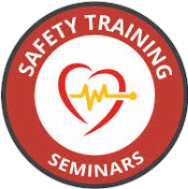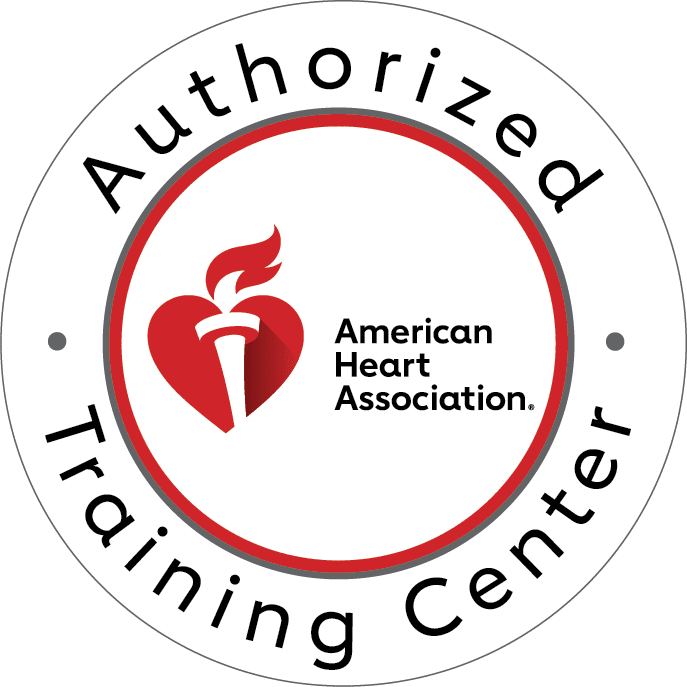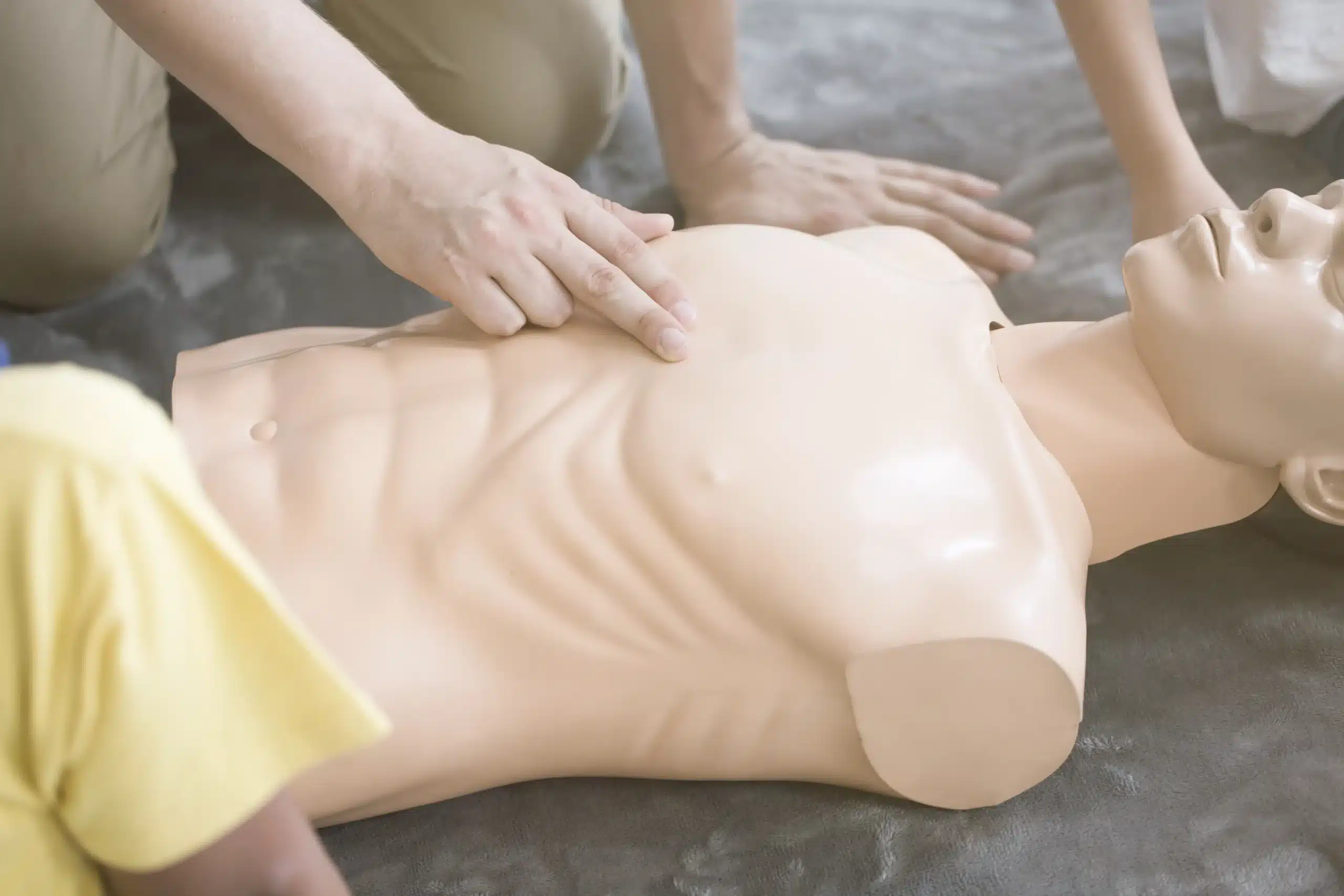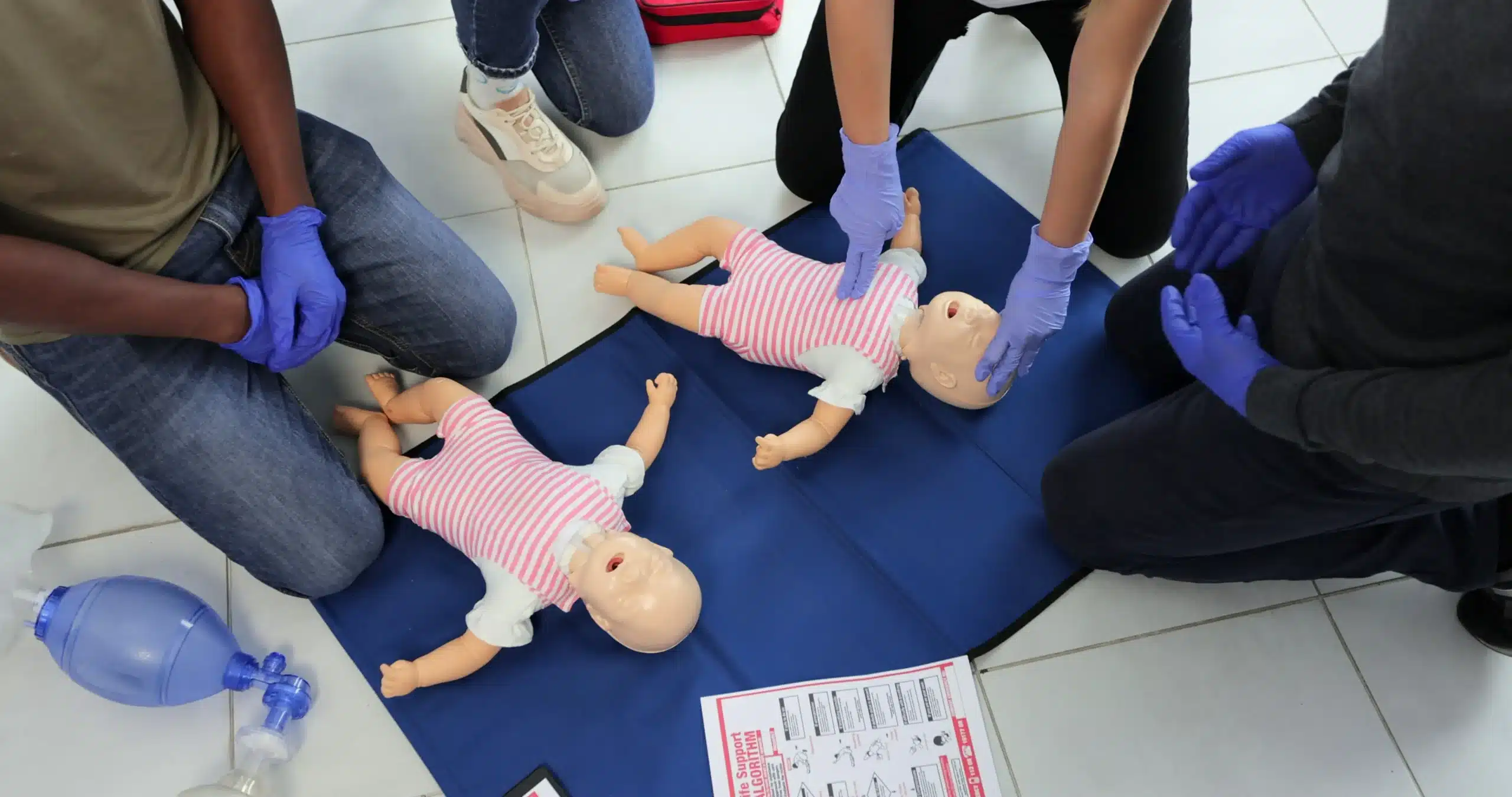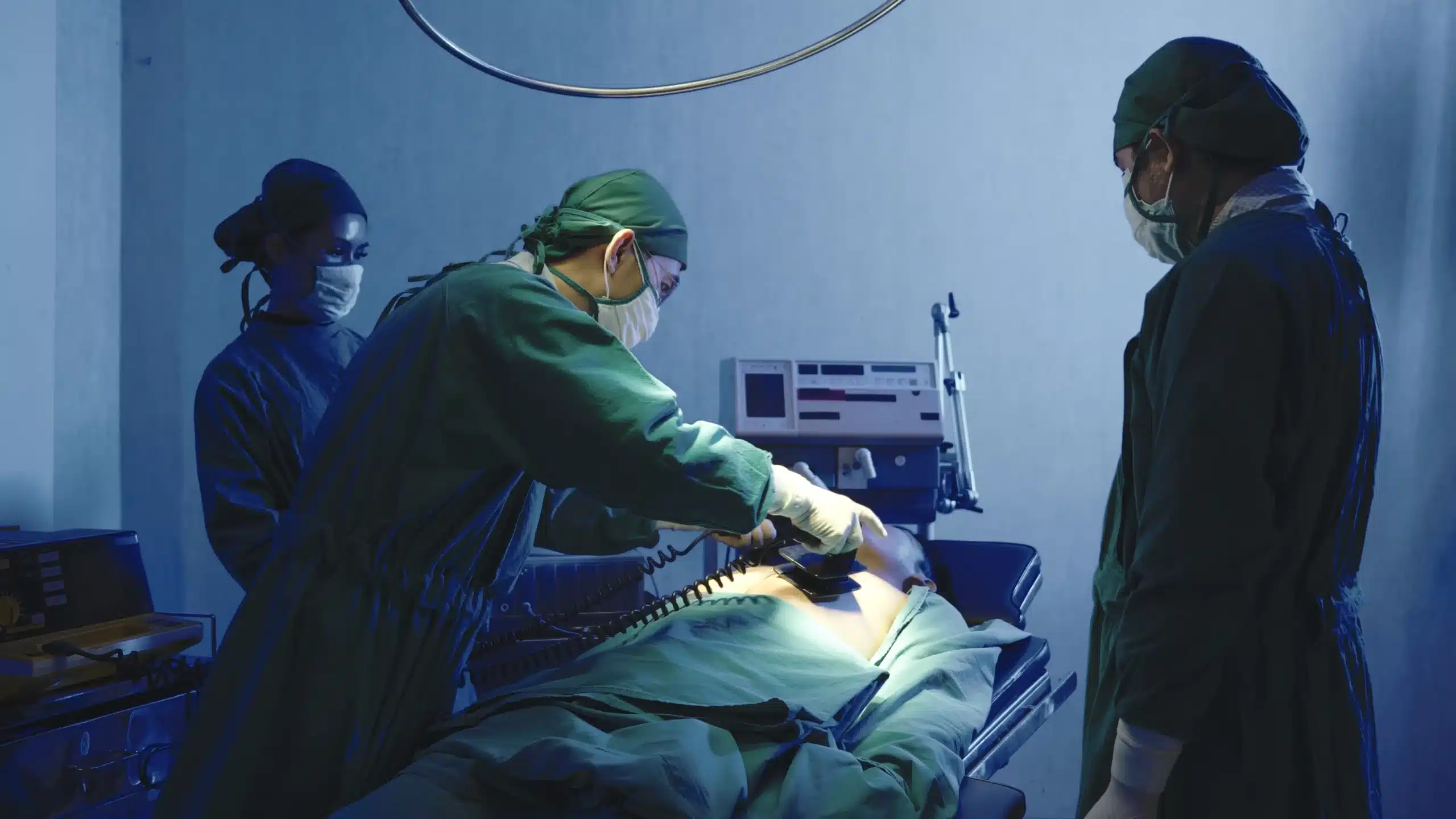Ready to learn a skill that can truly make a difference? BLS training Alameda empowers you to respond effectively in medical emergencies, providing crucial care until professional help arrives. This guide covers everything from the basics of BLS to finding the right training provider in Alameda. We’ll explore different learning formats, typical costs, and the essential skills you’ll gain. Plus, we’ll debunk some common myths about BLS training and who it’s for. Whether you’re a healthcare provider, a student, or simply someone who wants to be prepared, this post will help you find the perfect BLS training in Alameda to fit your needs.
Key Takeaways
- BLS skills are life-saving tools: Equipping yourself with CPR, AED operation, and other essential techniques empowers you to confidently respond to medical emergencies involving adults, children, and infants.
- Flexible training options fit your lifestyle: Choose from in-person, online, or blended learning formats to match your schedule and preferred learning style. Select an accredited provider like Alameda CPR Classes for high-quality instruction.
- Certification boosts your career and confidence: BLS certification enhances your resume, especially in healthcare, and prepares you to handle emergencies effectively. Remember to recertify every two years to maintain your valuable skills.
What is BLS Training and Why is it Important?
Basic Life Support (BLS) training gives you the skills to handle medical emergencies like cardiac arrest and respiratory distress. The training covers essential techniques such as CPR, using an AED, and how to help someone who is choking, for adults, children, and infants. These skills are crucial for both healthcare professionals and anyone who wants to be prepared to help in a crisis.
Think of BLS training as equipping you to respond effectively in those critical moments. It empowers you to act quickly and with confidence, providing immediate care that can truly save lives. Research shows how effective BLS training is in helping healthcare professionals provide prompt medical attention to those experiencing heart or breathing problems.
BLS training also emphasizes teamwork and clear communication during emergencies, which is especially important when multiple people are involved. BLS courses highlight the benefits of collaboration for providing effective care. Whether you work in healthcare or simply want to be prepared for the unexpected, BLS training provides the skills and confidence to potentially make a life-saving difference. If you’re in Alameda and interested in comprehensive training, take a look at the courses offered by Alameda CPR Classes.
Where to Find BLS Training in Alameda
If you’re looking for BLS training in Alameda, you have several great options. Here’s a rundown to help you find the right fit:
Alameda CPR Classes
Alameda CPR Classes offers a full range of American Heart Association (AHA) courses, including BLS. They also offer other certifications like ACLS, PALS, and First Aid. Conveniently located at 2059 Clinton Ave, Suite 2F, Alameda, CA 94501, they hold classes daily. Alameda CPR Classes also provides EMSA Child Care Health & Safety training and offers discounts for groups. Learn more about their CPR and First-aid certifications.
Safety Training Seminars
Safety Training Seminars offers AHA-certified CPR, BLS, ACLS, PALS, and First Aid courses in Alameda. Their location is convenient for those living in nearby Oakland and Berkeley. Find additional details about their Alameda classes on the Bay Area CPR website.
Bay Area CPR
Bay Area CPR provides affordable BLS, ACLS, PALS, and NRP classes every day in Alameda. Explore their CPR certification options if you’re seeking a cost-effective way to learn these vital skills.
LifeSavers CPR – First Aid Training
LifeSavers CPR – First Aid Training emphasizes building student confidence and equipping them with the skills to respond effectively in medical emergencies. Using both AHA and Medic First Aid programs, they offer two-year certifications in Basic Life Support. Check out their Yelp page for reviews and more information.
BLS Training Courses: Types and Content
When choosing a BLS training course, you’ll find a few different options. Understanding the differences will help you pick the best format for your learning style and schedule. Here’s a breakdown of what to expect:
In-Person Training
In-person BLS training offers a hands-on learning experience. You’ll work directly with an instructor and other students, practicing skills like CPR and AED use in a realistic setting. This type of training emphasizes the importance of teamwork in emergency response, which is crucial in many real-life situations. If you learn best by doing and value direct interaction, in-person training might be a good fit. Alameda CPR Classes offers in-person BLS training right here in Alameda.
Online Courses
Online BLS courses provide a flexible alternative to traditional classroom learning. These courses are just as effective as in-person training and allow you to learn at your own pace, anytime, anywhere. Online courses often incorporate videos, interactive exercises, and assessments to ensure you’re grasping the material. This format is ideal for those with busy schedules or limited access to in-person classes.
Hybrid Options
For those who appreciate aspects of both online and in-person learning, hybrid BLS courses offer a blended approach. You’ll complete a portion of the coursework online, followed by an in-person skills session. The Red Cross offers blended learning for BLS certification. This option allows for some schedule flexibility while still providing the opportunity for hands-on practice and instructor feedback.
Essential Skills Taught
Regardless of the format you choose, all BLS provider courses cover the same core skills. You’ll learn single-rescuer and team-based CPR, how to use an AED, and techniques for relieving choking in adults, children, and infants. You’ll also learn rescue breathing and other essential life-saving techniques. These skills equip you to respond effectively in various medical emergencies, providing immediate treatment until professional help arrives.
BLS Training Costs in Alameda
Typical Prices
BLS training in Alameda typically costs around $120. This usually covers the online portion of the course, the in-person skills test, and your American Heart Association (AHA) BLS certification card. This price is competitive for the Alameda area, so you can get high-quality training without overspending. Alameda CPR Classes offers a low price guarantee for the best value.
What Your Money Gets You
Investing in BLS training means gaining skills that can truly make a difference. You’ll learn to assess emergency situations, perform life-saving techniques like CPR and how to use an AED, and stabilize patients until professional help arrives. These skills are invaluable, both personally and professionally. Learn more about the life-saving benefits of BLS training. You can find more information about our BLS courses on our website.
Cost Factors
Several factors can influence the final cost of your BLS training. Alameda CPR Classes is committed to offering the lowest prices in Alameda County. We also offer discounts for group training, making it more affordable to train with colleagues. Our flexible class schedule, with options from 7 am to 6 pm, makes it easier to fit training into your schedule. Learn more about our CPR and First Aid certification.
Schedule Your BLS Training
Finding the right BLS training course that fits your schedule is easier than you think. With a variety of options available, you can get certified without disrupting your routine. Let’s explore the different scheduling possibilities.
Flexible Class Times
Alameda CPR Classes offers daily classes in Alameda, CA, at 2059 Clinton Ave, Suite 2F. This central location makes training accessible for Alameda residents. They also offer classes in over 60 other Northern California cities, broadening access to their training programs. Check their website for the most up-to-date schedule and find a time that works best for you.
Group Training
If you’re training a group, Alameda CPR Classes can come to you. They offer group classes at your location, simplifying the process of getting everyone certified together. This is a great option for businesses, community organizations, or even a group of friends or family members.
Blended Learning
Many BLS training courses now use a blended learning format, combining online learning with hands-on skill practice. You’ll typically complete an online module covering BLS theory (about one to two hours). Then, you’ll schedule a shorter in-person session (40-60 minutes) at a testing center to demonstrate your skills and receive your certification. This flexible approach lets you learn at your own pace and then practice with a certified instructor.
Benefits of BLS Certification & How Long it Lasts
Getting your BLS certification is more than just checking a box; it’s an investment in yourself, your career, and your community. It provides a foundation of lifesaving skills and opens doors to various opportunities. Let’s explore some key advantages:
Career Advancement
BLS certification is a valuable asset for healthcare professionals. Whether you’re a nurse, physician, dentist, or other medical provider, having a current BLS certification demonstrates your commitment to patient safety and high-quality care. It can give you an edge in a competitive job market and may even be a requirement for certain positions. Many healthcare employers see BLS certification as a sign of professionalism and dedication to ongoing learning, according to the American Health Training association. This can lead to more opportunities and career growth within the healthcare field.
Confidence in Emergencies
Imagine encountering a medical emergency—a sudden cardiac arrest, a choking incident, or a severe allergic reaction. Would you know what to do? BLS training equips you with the skills and knowledge to respond effectively under pressure. This training builds confidence, allowing you to act quickly and decisively when every second counts, as highlighted by Blue Guard. Knowing you can make a difference can be incredibly empowering, both in your professional and personal life.
Certification Validity
Your BLS certification, much like other professional certifications, is valid for a specific timeframe. According to the American Heart Association, BLS certification typically lasts for two years. This timeframe ensures that healthcare providers stay up-to-date with the latest resuscitation techniques and guidelines, which are constantly evolving based on new research and best practices. Staying current is essential for providing the most effective care.
Renewing Your Certification
Staying current with your BLS skills is crucial. The Red Cross offers recertification courses designed to refresh your knowledge and reinforce essential techniques. These courses cover the latest guidelines and provide opportunities for hands-on practice, ensuring you’re always prepared to provide effective care in emergency situations. Recertification demonstrates your continued commitment to providing high-quality care and maintaining your skills, which benefits both you and those you care for.
Choose the Right BLS Provider
Finding the right BLS training provider is crucial for a valuable learning experience. Here’s what to consider:
Accreditation and Certification
First, confirm your provider is accredited by a recognized organization like the American Heart Association (AHA). Alameda CPR Classes, for example, is an AHA Training Center, ensuring their courses meet national standards accepted by employers and healthcare institutions. This accreditation is essential for a valid BLS certification.
Instructor Qualifications
Experienced instructors significantly impact the quality of your training. Seek out providers with a reputation for excellent instruction, like LifeSavers CPR, known for their supportive and knowledgeable approach. A good instructor will build your confidence to handle real-life emergencies.
Course Content
A comprehensive BLS course should cover essential skills and knowledge. Make sure the course includes core topics like CPR, AED use, and airway management, equipping you with practical, life-saving skills.
Hands-On Practice
Hands-on practice is key to mastering BLS. Choose a provider that prioritizes practical training in a controlled environment. Providers like Bay Area CPR offer flexible options, including on-site classes, allowing for tailored training to solidify your skills and boost your confidence.
BLS Training Myths Debunked
Let’s clear up some common misconceptions about BLS training. These myths can prevent people from getting this life-saving certification.
Who Needs BLS Training?
One frequent myth is that only doctors, nurses, and paramedics need BLS training. The truth is, while it’s certainly crucial for these frontline professionals, BLS certification benefits a much broader range of people. Anyone involved in patient care, including dental professionals, medical assistants, and even physical therapists, can gain valuable skills from a BLS course. In fact, many healthcare facilities now require BLS certification for all their employees. Beyond the healthcare field, BLS training is also helpful for teachers, coaches, lifeguards, and anyone who wants to be prepared to help in a medical emergency.
Online vs. In-Person: Which is Better?
Another common question is whether online BLS training is as good as in-person training. Both formats have their advantages. Online courses offer flexibility and convenience, allowing you to learn at your own pace and on your own schedule. In-person classes provide hands-on practice and direct interaction with an instructor. High-quality online BLS courses incorporate interactive elements and simulations to ensure you still gain practical skills. Ultimately, the best format depends on your learning style and preferences.
Legal Matters and Good Samaritan Laws
Some people worry about legal repercussions if they perform BLS and something goes wrong. This fear is largely unfounded. Good Samaritan laws protect individuals who provide assistance in good faith during medical emergencies. BLS training equips you with the knowledge and skills to act confidently and effectively in these situations. It’s important to remember that BLS is about providing immediate, basic life support until professional medical help arrives. For more information on Good Samaritan Laws in California, you can review the details here. Having BLS certification demonstrates your commitment to patient safety and your willingness to help in times of need.
Key BLS Skills and Techniques
BLS training equips you with the skills to respond effectively during medical emergencies. These skills empower you to provide immediate care and potentially save lives. Here’s a closer look at some key techniques you’ll learn:
Effective Chest Compressions
High-quality chest compressions are the cornerstone of CPR. You’ll learn the proper depth, rate, and hand placement for performing compressions on adults, children, and infants. This involves understanding how to maintain adequate blood flow to vital organs during cardiac arrest. A BLS provider course covers single-rescuer and team-based CPR, along with techniques for choking relief, giving you the tools to respond to various emergency scenarios.
Using an AED
Automated External Defibrillators (AEDs) are life-saving devices that can restore a normal heart rhythm during sudden cardiac arrest. BLS training teaches you how to quickly and correctly use an AED, analyze the heart rhythm, and deliver a shock if necessary. Understanding AED operation is crucial for increasing the chances of survival for someone experiencing a cardiac event.
Airway Management
Maintaining an open airway is essential for effective resuscitation. BLS training covers various techniques for airway management, including how to open the airway, use airway adjuncts, and provide rescue breaths. These essential skills are particularly important for healthcare professionals and first responders working in settings like hospitals and ambulance services.
Teamwork During Resuscitation
In many emergency situations, teamwork is essential for successful resuscitation. BLS training emphasizes the importance of clear communication, coordinated efforts, and role assignment within a team. Effective teamwork training ensures that each member understands their responsibilities and can contribute effectively to the overall effort.
Get Ready for Your BLS Training
So, you’ve decided to get your BLS certification—fantastic! Knowing you’re about to gain these lifesaving skills is empowering. To make the most of your training, here’s what you should know to prepare:
Prerequisites
There aren’t any strict prerequisites for BLS training. Whether you’re a healthcare professional, a concerned citizen, or somewhere in between, you’re welcome to enroll. Alameda CPR Classes offers BLS certification courses in Alameda, CA, available daily from 7 am to 6 pm, making it easy to fit into your schedule.
What to Bring
Just show up ready to learn! Your BLS provider will supply all the necessary equipment. Alameda CPR Classes is known for its supportive learning environment. Their instructors create a comfortable atmosphere where you can ask questions and gain the confidence to act in an emergency. A notebook and pen might be helpful for taking notes, but they aren’t required.
Pre-Course Study Materials
While not mandatory, reviewing some pre-course materials can give you a head start. Think of it like previewing material before an exam—it helps things click faster. Some providers offer videos and online resources. Even a quick overview can significantly improve your understanding of the skills.
What to Expect
During your BLS training, you’ll learn the essential skills to respond to various medical emergencies. The course covers single-rescuer and team-based CPR for adults, children, and infants. You’ll also learn how to help someone who is choking and how to use an AED. These skills equip you to provide immediate treatment and potentially save a life. A good BLS course will cover essential resuscitation techniques and give you plenty of opportunities to practice.
Related Articles
- The Importance of CPR in Saving Lives – Alameda CPR Classes
- BLS CPR Courses in Alameda, CA – Alameda CPR Courses
- Debunking Common CPR Myths for Life-Saving Confidence
- The Science Behind Effective CPR: A Comprehensive Guide
- Why Workplace CPR and First-Aid Training is Important
Frequently Asked Questions
Is BLS certification the same as CPR certification?
Not exactly. BLS certification is broader than CPR certification. BLS includes CPR but also covers other essential skills like using an AED and relieving choking. Think of CPR as one piece of the larger BLS puzzle.
How long does it take to get BLS certified?
The time commitment varies depending on the course format. In-person classes usually take a few hours, while blended learning (online coursework plus an in-person skills session) offers more flexibility. Online-only courses let you learn at your own pace, so the timeframe is more individualized.
What if I’m nervous about the skills testing?
It’s totally normal to feel a little apprehensive, but know that BLS instructors are there to support you. They create a comfortable learning environment where you can practice until you feel confident. The focus is on building your skills and ensuring you’re prepared to help in a real emergency.
How often do I need to renew my BLS certification?
BLS certification is typically valid for two years. Renewing your certification keeps your skills sharp and ensures you’re up-to-date with the latest guidelines. It’s a smart way to maintain your proficiency and demonstrate your commitment to providing high-quality care.
Why should I choose Alameda CPR Classes for my BLS training?
Alameda CPR Classes offers a convenient location, competitive pricing, and a wide range of courses. They are an accredited American Heart Association Training Center, meaning their courses meet nationally recognized standards. Plus, they offer flexible scheduling options to fit your busy life.
